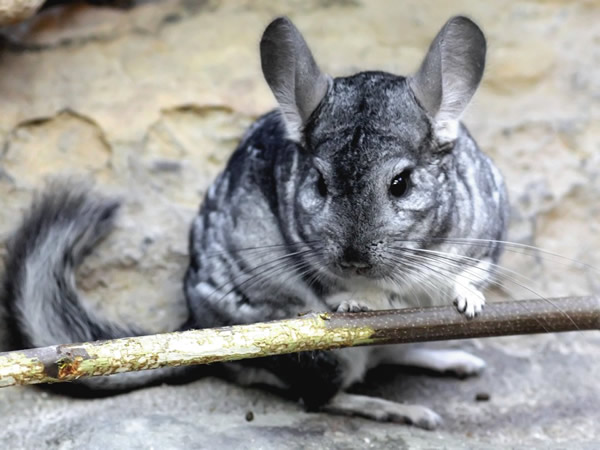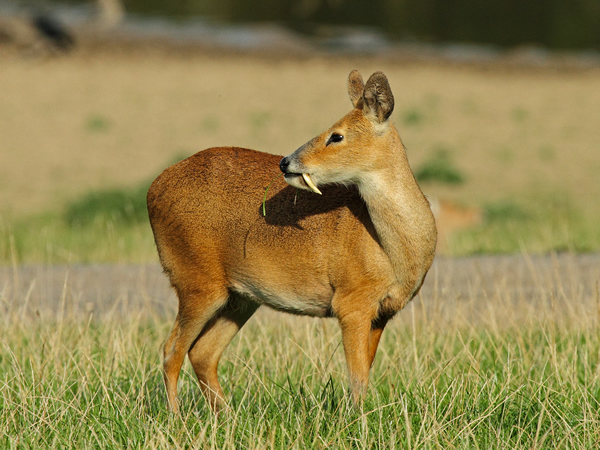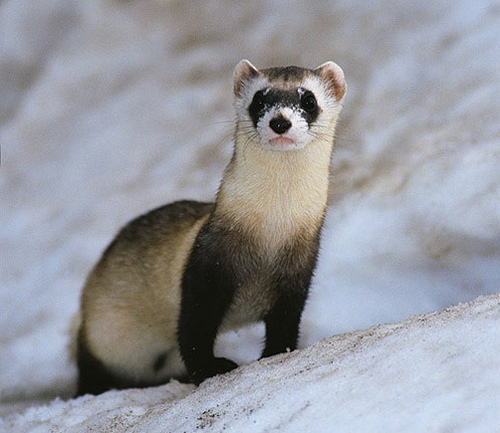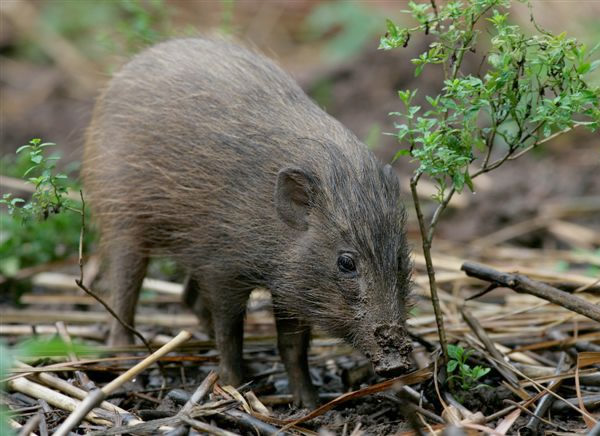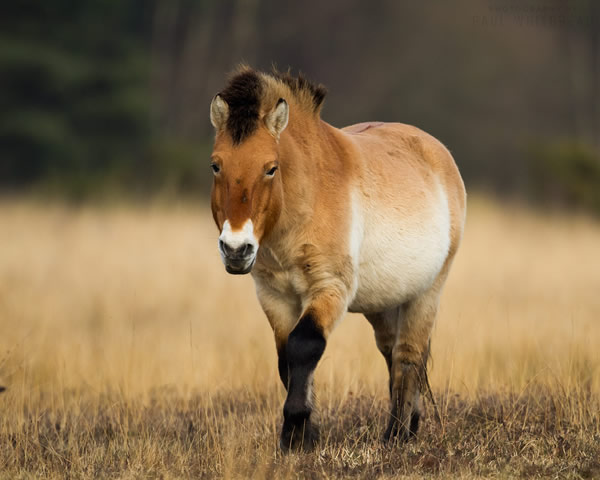 |
| Koala |
Description and biology
Although the koala is often called a “koala bear” and is noted for its teddy bear looks, it is not a member of the bear family. Rather, it is a marsupial—an animal related to wombats, opossums, and kangaroos. (Marsupials differ from other mammals in that the females carry their undeveloped young in pouches on their abdomen.)
Koalas are small and round, with little eyes and a big black nose. They have no tail. Adults range from about 24 to 35 inches (61 to 90 centimeters) in length and weigh about 10 to 30 pounds (4.5 to 13.5 kilograms). Males are much larger than females.
Koalas have soft, thick gray fur with brown tinges and a white undercoat, with white patches on the chest, neck, and ears. The fur acts as a rain repellant and provides warmth. Koalas living in
southern Australia, where winters are colder, have longer fur.
Koalas are arboreal (they live in trees) and nocturnal (active during the night). They have a keen sense of balance and are very muscular, with strong, well–developed limbs for climbing in trees.
Their padded hands and feet are also well adapted to the arboreal life. Their front paws have five fingers with very long claws. Two of the fingers are opposable (capable of being pushed against the other fingers).
The back paws also have long claws and one opposable thumb. Koalas slowly climb up tree trunks and branches by gripping them, first with the front claws, then the back. Often, to go from tree to tree, a koala will descend to the ground, where it is most vulnerable to its predators and to injury.
Koalas are herbivorous, meaning they eat only plants. Their diet consists mainly of
eucalyptus (gum tree) leaves. Some types of eucalyptus leaves are poisonous, so koalas are highly selective about which leaves they will eat.
They use their keen sense of smell to select their food. Their
digestive systems are adapted to detoxify the poisons and to obtain energy from the eucalyptus leaves, which are low in nutrients. Koalas sleep an average of 18 to 20 hours per day.
They have a very low metabolic rate (method of breaking down nutrients to create energy) and by sleeping long hours and remaining fairly inactive, they are able to save energy. Koalas drink very little water, as the eucalyptus leaves provide them with fluids.
Koalas are territorial animals. Although they are solitary, they live in a
complex social world that is evenly distributed throughout eucalypt forests. Each individual animal has its own home range, where it will live its whole life.
The home range must have the right kind of eucalyptus for the koala to eat and it must be located within a stable community of koalas. An individual koala’s territory will usually overlap several other koala territories, and some socializing occurs in the shared areas, though there is little interaction outside of
mating season.
Koalas can communicate with each other over large distances by means of a deep bellow. Males bellow, sometimes in place of fighting, to communicate their social and physical position. Females bellow, though far less than males, either to signal aggression or as a part of a mating routine.
Koalas communicate fear, annoyance, and intimacy with other sounds. Also, the male uses scent–marking during mating season, rubbing his large sternal (near the breastbone) gland against tree trunks to communicate his space and dominance.
During mating season, males begin to bellow aggressively. They mate with several females during the season. The female koala gives birth to a single offspring after a gestation (pregnancy) period of 34 to 36 days.
The undeveloped baby, called a “joey,” weighs only a couple of ounces and is delivered directly into the mother’s pouch, where it will stay, constantly nursing, for six to seven months.
When koala young leave the pouch, they stay with their mother, riding on her back, until they are about one year old. For the next two to three years, they will remain in the mother’s home range. After that, they go off to find their own home ranges. Koalas in the wild can live from 13 to 18 years.
Habitat and current distribution
Koalas live in eucalyptus forests ranging from northern
Queensland to southern Victoria and southeastern South Australia. However, by most estimates about 80 percent of the eucalyptus forests where koalas have historically lived have now been cleared, and the remaining koalas live in increasingly fragmented areas.
Because the koala is dependent on certain types of eucalyptus leaves for food, the loss of the eucalyptus forests means a decline in the koala population no matter how much they are otherwise protected. According to the Australian Koala Foundation, there are about 40,000–80,000 koalas left in the wild, although there is controversy about these numbers.
History and conservation measures
There were millions of koalas in Australia in 1788, when European settlement began. Although indigenous (native) Australians hunted koalas for food, the koala population remained stable until a market developed in Europe for the thick and soft koala fur.
During the last decades of the nineteenth century and the first decades of the twentieth approximately 3 million koalas were killed for their fur. In 1927, the Australian government banned hunting or intentionally killing a koala without special permission. By that time the population had been reduced from millions to thousands.
Since the 1930s, koalas have been protected from hunters, but their habitat has been swiftly destroyed. The land along the eastern shores of Australia, once teeming with eucalyptus forests, has been cleared for farming; towns and cities have grown up around the farms.
Today, with 80 percent of the eucalyptus forests gone, the remaining 20 percent of the forests in which the surviving koalas live are for the most part privately owned. Koalas have suffered heavily from the destruction of their habitat and from the fragmentation caused by roads, farms, and towns that restrict movement.
This makes it difficult or impossible for the individuals within a koala population to reach one another. Koalas are regularly killed and injured by dogs and by cars. Fires and weed infestations have further ruined the eucalyptus groves that are so important to their survival.
The stresses of living in these fragmented and dangerous conditions have led to large outbreaks of disease among koalas, including infections in their reproductive systems that cause infertility (inability to bear young).
Numerous recovery programs have been initiated in the early 2000s with the mission to stop further clearance of koala habitat areas, to restore and protect certain habitat areas that have been damaged or destroyed, to restrain dogs, to control traffic on roads in koala areas, and to educate area residents on the management of koalas. Research programs on disease, breeding, and genetics are also in place.

